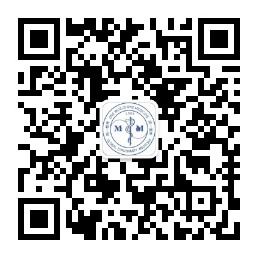目的 探讨超声引导下肩关节囊周围神经阻滞联合颈浅丛神经阻滞(SCPB)在肩关节镜手术围手术期镇痛中的应用效果。方法 选取60例接受全身麻醉联合外周神经阻滞下行肩关节镜手术的患者作为研究对象,将患者随机分为观察组和对照组,每组30例。观察组采用肩关节囊周围神经阻滞联合SCPB,对照组采用肌间沟臂丛神经阻滞(ISB)联合SCPB。记录两组患者入室(T0)、麻醉诱导后(T1)、手术开始(T2)、手术开始后15 min(T3)、术毕(T4)、术后6 h(T5)、术后9 h(T6)、术后12 h(T7)、术后24 h(T8)的平均动脉压、心率、脉搏血氧饱和度;统计两组手术相关指标(术中出血量、手术时间、拔管时间、丙泊酚及瑞芬太尼使用总量);评估膈肌功能、术后镇痛效果、术后首次需求性镇痛时间、补救镇痛频次及术后不良反应发生情况。结果 两组患者各时间点围手术期平均动脉压、心率、脉搏血氧饱合度差异无统计学意义(P>0.05);仅T6观察组血氧饱和度高于对照组(P<0.05);两组患者术中出血量、手术时间、拔管时间、丙泊酚使用总量及瑞芬太尼使用总量比较,差异无统计学意义(P>0.05);膈肌功能方面,两组患者阻滞前后的膈肌移动度、膈肌移动度变化、阻滞前后的膈肌厚度比较差异无统计学意义,但观察组膈肌麻痹发生率略低于对照组(P>0.05);术后镇痛效果方面,两组患者术后静息疼痛评分、术后补救镇痛比例差异无统计学意义(P>0.05)。结论 在肩关节镜手术中采用肩关节囊周围神经阻滞联合SCPB可获得与ISB联合SCPB相当的镇痛效果,同时降低了膈肌麻痹发生率。
微创医学 页码:413-421
作者机构:
基金信息:▲基金项目:广西壮族自治区卫生健康委员会自筹经费科研课题(编号:Z-A20240447);广西医疗卫生适宜技术开发与推广应用项目(编号:S2021109) *通信作者
- 中文简介
- 英文简介
- 参考文献
Objective To investigate the application effect of ultrasound-guided peripheral nerve block around the shoulder joint capsule combined with superficial cervical plexus block(SCPB) in perioperative analgesia of arthroscopic shoulder surgery. Methods Sixty patients undergoing arthroscopic shoulder surgery under general anesthesia combined with peripheral nerve block were selected as the research subjects, and they were randomly divided into an observation group and a control group, with 30 cases in each group. The observation group was administered peripheral nerve block around the shoulder joint capsule combined with SCPB, while the control group was administered inter-scalene brachial plexus block (ISB) combined with SCPB. The mean arterial pressure, heart rate and pulse oxygen saturation of patients in both groups were recorded at the following time points: on admission to the operating room (T0), after anesthesia induction (T1), beginning of surgery (T2), 15 minutes after the start of surgery (T3), at the end of surgery (T4), 6 hours after surgery (T5), 9 hours after surgery (T6), 12 hours after surgery (T7), 24 hours after surgery (T8). The surgery-related indicators of the two groups, including intraoperative blood loss, surgical duration, extubation time, and total dosage of propofol and remifentanil, were statistically analyzed; meanwhile, diaphragmatic function, postoperative analgesic effect, time to first request for postoperative analgesia, frequency of rescue analgesia, and occurrence of postoperative adverse reactions were evaluated. Results There was no statistically significant difference in perioperative mean arterial pressure, heart rate and pulse oxygen saturation between the two groups at all time points (P>0.05); only at T6, the pulse oxygen saturation in the observation group was higher than that in the control group (P<0.05); when comparing intraoperative blood loss, surgical duration, extubation time, total dosage of propofol and remifentanil between the two groups, no statistically significant difference was found (P>0.05). In terms of diaphragmatic function, there was no statistically significant difference between the two groups in pre- and post-block diaphragmatic excursion, changes in diaphragmatic excursion, and pre- and post-block diaphragmatic thickness; however, the incidence of diaphragmatic paralysis in the observation group was slightly lower than that in the control group (P>0.05). Regarding postoperative analgesic effect, no statistically significant differences were observed between the two groups in postoperative resting pain score and proportion of postoperative rescue analgesia (P>0.05). Conclusion In arthroscopic shoulder surgery, adopting peripheral nerve block around the shoulder joint capsule combined with SCPB can achieve a comparable analgesic effect to that of ISB combined with SCPB, while reducing the incidence of diaphragmatic paralysis.
-
无




 注册
注册 忘记密码
忘记密码 忘记用户名
忘记用户名 专家账号密码找回
专家账号密码找回 下载
下载 收藏
收藏
